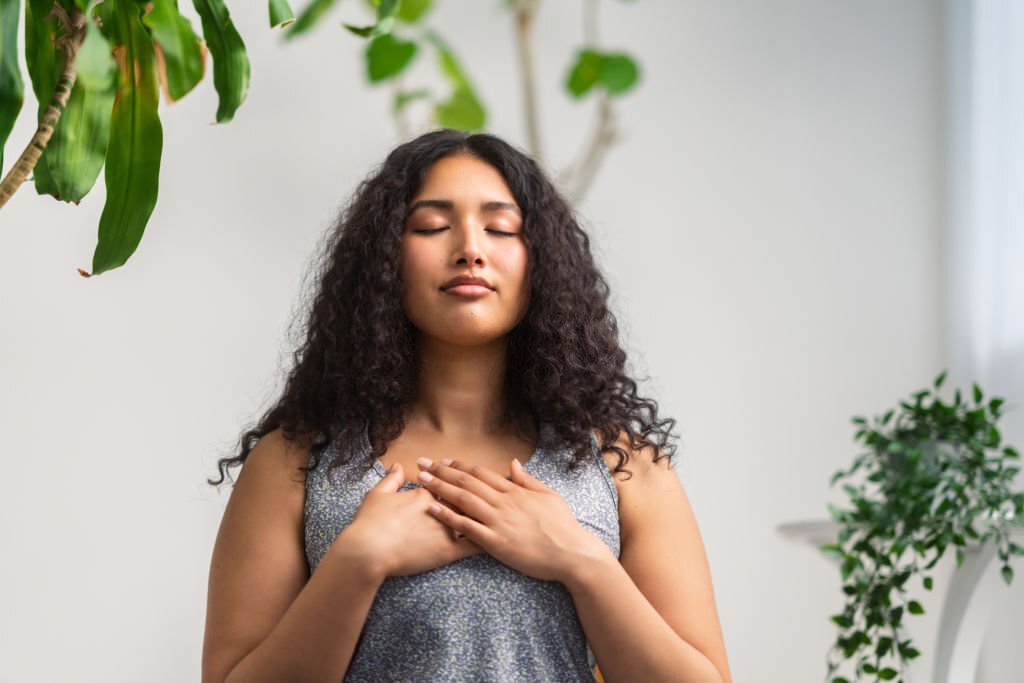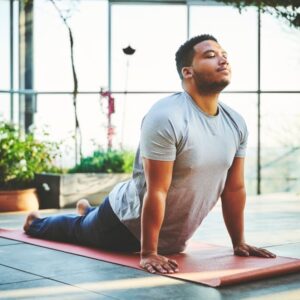Introduction
Reiterate the importance of mindfulness meditation for anxiety
To “reiterate the importance of mindfulness meditation for anxiety” is meant to emphasize and underline the importance of incorporating mindfulness practices as a valuable tool in managing and reducing anxiety. Here is a detailed description of this point:
Understanding Anxiety: Anxiety is a common mental health condition characterized by excessive worry, fear, and nervousness. It can appear in various forms, such as generalized anxiety disorder, social anxiety disorder, panic disorder, and others. Anxiety can have a significant impact on a person’s emotional well-being, relationships, and overall quality of life.
What is Mindfulness: Mindfulness is a mental state and a form of meditation practice that involves paying complete attention to the present moment without judgment. It is about being fully aware of your thoughts, feelings, physical sensations, and the environment around you. By practicing mindfulness, individuals can cultivate a higher sense of self-awareness and develop the ability to observe their thoughts and feelings without getting bogged down in them.
How Mindfulness Helps With Anxiety: Mindfulness-based interventions have been studied extensively and shown to be effective in managing anxiety. By adopting mindfulness practices, individuals can experience a number of benefits:
Reducing rumination: Mindfulness helps break the cycle of rumination, which is a common symptom of anxiety. Ruminating involves repeatedly focusing on negative thoughts and feelings, which lead to increased anxiety. Mindfulness helps individuals to accept these thoughts without affecting them, thereby reducing the level of anxiety.
Controlling Emotions: Anxiety can often lead to intense emotional reactions. Mindfulness allows individuals to become more aware of their emotions when they arise, enabling them to respond to these emotions in a more constructive way. This emotional regulation helps prevent anxiety from building up.
Enhancing the relaxation response: Mindfulness practice activates the parasympathetic nervous system, thereby promoting the relaxation response in the body. It counters the physical symptoms of anxiety, such as increased heart rate and shallow breathing, promoting a feeling of calmness and peace.
Enhancing Coping Mechanisms: Mindfulness equips individuals with effective coping mechanisms to deal with stress and triggers that may otherwise increase anxiety. Rather than reacting impulsively, mindfulness helps individuals to respond thoughtfully and with greater flexibility.
Building Resilience: Regular mindfulness practice can increase emotional resilience. Resilience refers to the ability to overcome challenges and adversity. Mindfulness helps individuals develop a non-judgmental attitude toward themselves, fostering self-compassion and acceptance, which are essential components of resilience.
Long-Term Effects: Mindfulness is not a quick fix, but a skill that gets better with consistent practice. The more individuals engage in mindfulness exercises, the more they may experience its long-term benefits in reducing anxiety and promoting overall well-being.
Accessible and Cost-Effective: A major advantage of mindfulness is its accessibility. It doesn’t require any special equipment, and there are various resources available, such as guided meditation apps, online courses, and books. Additionally, compared to some other anxiety treatments, mindfulness is often a cost-effective option.
Complement to other treatments: Mindfulness can be used as a standalone approach or as a complementary practice with other anxiety treatments, such as therapy or medication. Many therapists incorporate mindfulness-based techniques into their treatment plans for anxiety disorders.
Step 1: Body Awareness

Mindfulness and Body Awareness: This technique is based on the principles of mindfulness, which involves paying attention to the present moment without judgment. By scanning the body for stress, individuals become more aware of physical sensations and areas where tension and stress tend to accumulate.
Finding a comfortable position: To begin the process, find a comfortable and quiet place to sit or lie down. You can close your eyes or keep them gently open, whichever feels more comfortable. Loosen any tight clothing and take a few deep breaths to begin relaxation.
Start from above: Begin the process of relaxing the muscles from the top of your body, usually starting with the head and face. Slowly lower down toward the feet, or you can do it in reverse—it’s important to be consistent in your approach.
Progressive muscle relaxation: Intentionally tense the muscles as you focus on each muscle group and hold the tension for a few seconds. Then, release the tension and allow the muscles to completely relax.
For example, you can start by squeezing your forehead and then releasing it to relax your forehead muscles. Then move on to your eyes, cheeks, jawline, neck, shoulders etc. Continue over entire body including arms, chest, back, abdomen, buttocks, thighs, calves and feet.
Breathing and Awareness: Throughout the process, keep breathing steady and deep. Be mindful of any sensations, feelings, or thoughts that arise as you focus on each muscle group. If you notice any areas of tension, pay special attention to them and try to release the tension more consciously.
Releasing Tension: This technique allows you to identify and release areas where you may be unconsciously holding tension and stress. By progressively relaxing each muscle group, you promote a sense of physical and mental well-being. This practice can help reduce symptoms of stress, anxiety and even physical discomfort related to muscle tension.
Promoting the relaxation response: The act of consciously relaxing each muscle group triggers the body’s relaxation response. It counters the effects of the fight-or-flight response, lowers levels of cortisol (the stress hormone) and promotes feelings of calmness and relaxation.
Step 2: Observing Thoughts and Emotions
It involves observing one’s thoughts, feelings, physical sensations, and surrounding environment without judgment. The goal is to develop a non-reactive and accepting attitude toward whatever arises in the mind and body.
Observation of thoughts and feelings: In the context of mindfulness, thoughts and feelings are viewed as passing mental events. They arise, remain for some time and then naturally disappear. Rather than trying to suppress or control these mental events, mindfulness encourages gentle and non-judgmental observation of them.
Avoiding judgement: Judgment in this context refers to the tendency to label thoughts or feelings as positive or negative, right or wrong, desirable or undesirable. When we appraise our thoughts or feelings, we add an extra layer of evaluation and analysis to them, which can lead to greater emotional distress.
Detachment: Detachment means not being overly attached or attached to your thoughts and feelings. It is acknowledging that thoughts and feelings are transitory and do not define who we are. By avoiding attachment, we create space between ourselves and our thoughts, allowing us to respond to them more efficiently.
Benefits of non-judgment and non-attachment:
Decreased emotional reactivity: When we stop judging our thoughts and feelings, we can react to them with greater emotional balance. It lowers the intensity of emotional reactions and prevents us from getting swept up in them.
Greater clarity of mind: Non-judgmental observation allows us to view our thoughts and feelings more objectively. It helps us gain insight into our thought patterns and emotional triggers.
Reduction in Rumination: By not engaging with negative thoughts, we can stop rumination – repetitive and unproductive dwelling on negative experiences or worries.
Enhanced Emotional Regulation: Detachment helps us to control our emotions more effectively. Instead of repressing or avoiding difficult feelings, we learn to accept and process them in healthy ways.
Acceptance and Self-Compassion: By letting go of thoughts and feelings without judgment, we develop a sense of self-acceptance and self-compassion. We recognize that it is normal to experience a variety of thoughts and feelings, and that we are not defined by any one of them.
Practicing Mindfulness: Mindfulness can be developed through a variety of techniques such as meditation, breath awareness, body scan, or mindful movement. The practice involves returning attention to the present moment whenever the mind wanders, and gently observing thoughts and feelings as they arise without becoming attached to them.
The Challenges of Non-Judgment and Non-Attachment: It is necessary to acknowledge that non-judgment and non-attachment are skills that require practice. Our brains are conditioned to automatically judge and engage with thoughts and feelings. It is normal to experience challenges in letting go of judgment and attachment, but these skills can be developed with consistent practice.
Step 3: Cultivating Gratitude and Positivity

Understanding Gratitude: Gratitude is a positive emotion and a powerful mental attitude that involves recognizing and being grateful for the blessings, kindness, and positive experiences in one’s life. This is the opposite of taking things for granted or constantly focusing on what is lacking.
Changing Focus: In our busy and often demanding lives, it is easy to get caught up in negative thoughts and worries about what we don’t have or what is going wrong. Practicing gratitude involves intentionally focusing our attention on what is going well and what we are grateful for.
Appreciation of the present moment: Gratitude brings attention to the present moment and helps us to fully appreciate what is happening in our lives right now. It encourages us to enjoy simple pleasures and moments of joy that might otherwise go unnoticed.
Counting the Blessings: Gratitude involves counting our blessings and recognizing the positive aspects of our lives, whether they are big or small. This can include things like good health, supportive relationships, meaningful work, a roof over our heads, access to food and clean water, and much, much more.
Psychological Benefits: Research has shown that practicing gratitude has many psychological benefits. This can increase feelings of happiness, satisfaction and overall well-being. Grateful individuals often experience less stress and greater resilience in the face of challenges.
Better Relationships: Expressing gratitude to others can strengthen our relationships. When we acknowledge and appreciate the kindness and support we receive from others, it fosters a sense of connection and reciprocity.
Develop Positivity: Gratitude is one way of developing a positive attitude towards life. By focusing on what we are grateful for, we train our mind to notice and magnify positive experiences, which can lead to a more hopeful and optimistic mindset.
Gratitude Practices: There are various ways to incorporate gratitude into daily life:
Gratitude Journaling: Keeping a gratitude journal where you write down the things you are grateful for every day.
Gratitude Meditation: Incorporating gratitude into meditation by reflecting on the things you appreciate and are grateful for.
Expressing gratitude to others: Telling the people in your life that you appreciate and are grateful for their presence and support.
Conscious Appreciation: Take a few moments throughout the day to be mindful of the positive aspects of your surroundings and experiences.
You may also like: How to sustainably adopt a ketogenic lifestyle
conclusion:
Ultimately, practicing mindfulness meditation can be a transformative journey towards anxiety relief and overall well-being. This step-by-step guide has provided valuable insights and techniques to help you move forward on this path with confidence.
By understanding the basics of mindfulness and its positive effects on anxiety, you can set yourself up for a rewarding practice. Remember to find a quiet place, remove distractions, and approach each session with a non-judgmental attitude.
During your mindfulness meditation practice, focus on body awareness, observing thoughts and feelings, and developing gratitude and positivity. These techniques will empower you to stay in the present, calmly acknowledging any worrying thoughts and letting them pass without attachment.
Loving-kindness meditation will allow you to increase compassion toward yourself, loved ones, and all beings, foster a deeper sense of connectedness, and reduce the burden of anxiety. In addition, grounding techniques can support you in moments of crisis, bring you back to the present, and release the grip of anxiety.
Make a commitment to find time for a daily mindfulness practice, even if only for a few minutes. Consistency will lead to lasting benefits, rewiring your brain to respond to stress with a more calm and focused mindset.
As you continue on your mindful journey, remember that progress is not linear, and patience is key. Approach each moment with openness and acceptance, knowing that every step you take brings you closer to inner peace and relief from anxiety.






